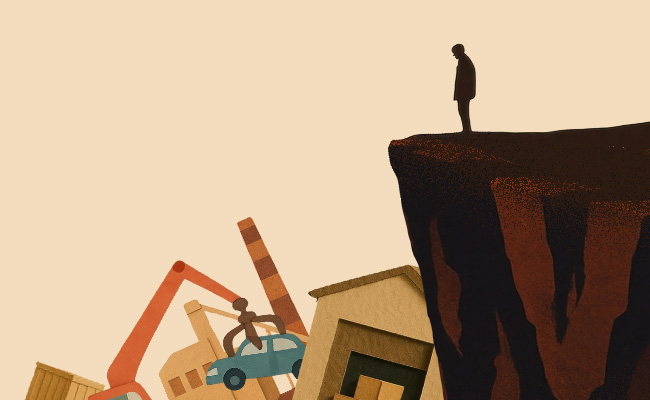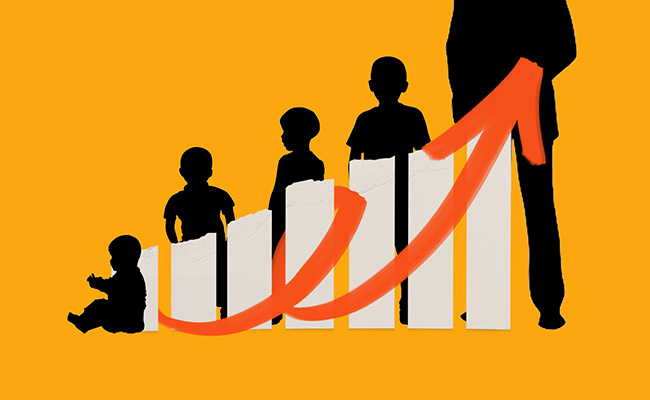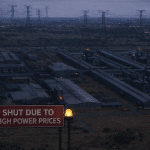South Africa’s manufacturing base is shutting down, piece by piece. Once shuttered, factories are rarely revived, leaving behind not just lost jobs but a country edging deeper into deindustrialisation – a slide no amount of government policy has been able to stop.
In 1994, manufacturing contributed nearly a quarter of GDP. That share has not exceeded 15% since 2010. After stalling in the wake of the 2008/09 financial crisis, the sector never recovered. Output today is lower than it was in 2006.
Instead, the economy has tilted toward services such as finance, real estate, business services, transportation, trade and tourism. But these industries cannot absorb workers fast enough relative to the growth in the population. And every time those sectors grow, imports increase, eroding the benefit.
“Countries that have been able to become quite successful in being dominated by services rather than industry have had to develop a broader array of services,” Kevin Lings, chief economist at Stanlib, which manages more than R700bn in assets, tells Currency. “We’re not doing that.”
The steel industry is buckling under the impending closure of ArcelorMittal South Africa’s long-steel business, threatening 3,500 direct jobs and a catastrophic estimated 100,000 downstream positions. The automotive sector is bleeding, with Ford announcing 474 job cuts and Goodyear shuttering its plant in Kariega, costing 900 jobs.
Glencore and Merafe have begun consultations over retrenchments at their ferrochrome and vanadium venture in Rustenburg, citing electricity costs and uncompetitive economics. Labour union Solidarity estimates as many as 2,400 jobs could be lost.
South Africa shed 291,000 jobs in the first quarter of 2025, pushing the official unemployment rate up by one percentage point to 32.9%. On the expanded definition, which includes those who have given up looking for work, unemployment rose to 43.1%.
“These are not just numbers, but people with families and children to support and put through school,” employment and labour minister Nomakhosazana Meth has said.
In Newcastle, where ArcelorMittal is exiting, the fallout could be devastating.
“The job losses will have a huge social and economic impact, not only on the Newcastle community but on the country as a whole,” says Ashley Benjamin, deputy secretary of the Federation of Unions of South Africa. “Thousands of households will lose their main source of income. The loss of income will decrease the spending power of many households, reducing their participation in economic activities. This will negatively impact on the local economy.”
In the Eastern Cape, provincial economic development MEC Nonkqubela Pieters has warned that the automotive “ecosystem is under existential threat”.
Irvin Jim, general secretary of the National Union of Metalworkers of South Africa, is blunter: “We have witnessed a painful pattern that as soon as employers’ profits are under threat, the first thing they do is to target what they regard as the weakest link in the chain, which is workers. We regard these plant closures and retrenchments as an attack on the South African working class.”
Systemic issues
The companies would argue this is not cyclical but systemic. South Africa’s networks of support – from electricity to rail, ports, roads and water – have been weakened or destroyed. Corruption has hollowed out state institutions. Municipalities are in ruin: only 16% of South Africa’s 257 councils achieved clean audits in 2023/24. More than one in 10 are formally dysfunctional or under administration.
“The unreliability of electricity, water and sanitation infrastructure; political and municipal instability; rapidly declining safety and security; logistics inefficiencies; the general lack of an ease of doing business and cheap imports … have put local manufacturers in a position where it is a struggle to be sustainable and competitive,” Denise van Huyssteen, CEO of the Nelson Mandela Bay Business Chamber, tells Currency.
Global forces are worsening the strain. In April, the US imposed a 30% reciprocal tariff on South African goods. “Critical parts of the economy are under real pressure,” says Absa chief economist Miyelani Maluleke. Exports to the US fell nearly 18% in value in the second quarter compared with just 3% to the rest of the world. “This was before the 30% tariff actually kicked in,” he notes.
At the same time, imports from China are rising. RMB’s Isaah Mhlanga warns: “In the automotive sector, you see a lot of imports of Chinese cars into the economy that are now displacing the traditional automotive producers. It’s not going to stop there – it’s going to go into broad manufactured products, which would mean lower prices for consumers, but displacement of existing players that would lead to job losses.”
While the government has pursued reforms under Operation Vulindlela, opening rail to private operators, easing load-shedding through more private power, and pushing for improvements at Transnet’s ports, progress is just too slow.
“You need to unlock a lot of the big constraints, particularly the infrastructure constraints,” says Lings. “And I just don’t see that happening soon.”
Meth’s department tried to stave off ArcelorMittal’s closure with a R416m rescue from the Unemployment Insurance Fund’s temporary employer/employee relief scheme. The deal collapsed when the company refused to guarantee jobs.
Restoring confidence
Despite the gloom, there are flickers of resilience. Consumers have continued to spend, supported by lower interest rates earlier this year, pension withdrawals and a stronger rand.
SMMEs are finding ways to adapt. Two Gqeberha-based component makers, Hart Automotive and Ezi System, joined a trade delegation to the Intra-African Trade Fair in Algiers this month. “We are keen to share our abilities and knowledge with the rest of the continent,” says Ezi System owner Allen Cunningham.
Gerald Barth, managing director of Hart Automotive, is optimistic about new markets. “Our main clients are automotive suppliers that supply directly to the automotive original equipment manufacturers. We also manufacture non-automotive products for the agricultural sector.” His company has grown turnover by 25% annually through “persistence, resilience and innovation”.
Lings sees opportunity in construction. “If you literally turn South Africa into a construction site, with a credible pipeline of work, you will see companies reinvigorated.” By contrast, “once a big smelter closes, a big refinery closes, a mine closes, a shaft, those things are very, very difficult to reopen. The cost is just too substantial.”
Small-scale manufacturing could help, but ultimately won’t make the big impact that South Africa needs to restore confidence. “It doesn’t cost a huge amount to get involved,” says Lings. “You could probably then get small engineering and manufacturing projects up and running. They help any economy, but they’re not the big mega projects.”
Still, Stanlib’s Lings sees scope for revival in areas where barriers to entry are lower and global demand is shifting.
“Let’s say that you embarked on a process of developing further developments of the electricity sector using renewables. Then you’re going to need a lot of civil engineering work and a lot of other types of industrial activity,” he says. “If you create a sufficient pipeline that is credible of work … then you would see skills being set up here.”
South Africa’s $410bn economy is expected to grow less than 1% this year – not enough to dent unemployment. “Growth of around 1% is insufficient to reduce the unemployment rate that we have,” says Mhlanga.
Private investment has been shrinking, with business confidence stuck in “muddling through” territory. The RMB/BER business confidence index slipped further in the third quarter, dropping to 39 – three points below its long-term average – leaving more than 60% of executives dissatisfied with prevailing conditions. The decline was broad-based, with confidence in manufacturing, retail and wholesale trade all tumbling by 10 points or more, and manufacturers the hardest hit with a reading of just 23.
Ultimately, unless South Africa creates a credible pipeline of investment, strengthens logistics and accelerates reforms, it risks cementing an import-dependent service economy that cannot provide enough jobs.
RMB’s Mhlanga captures what the other economists also see as the missing ingredient to spurring much-needed confidence – urgency around the execution of reforms.
“For us to see closer to 2% economic growth, reforms must be implemented,” he says, “and implemented urgently.”
Top image: Rawpixel/Currency collage.
Sign up to Currency’s weekly newsletters to receive your own bulletin of weekday news and weekend treats. Register here.














